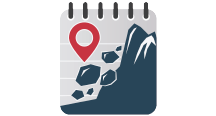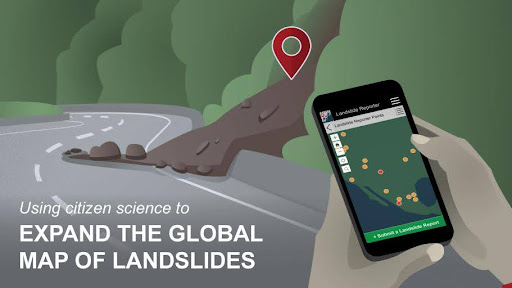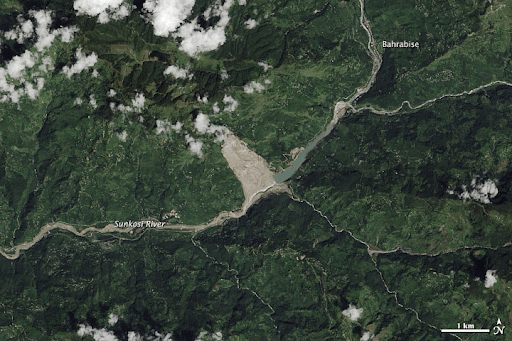Landslide Reporter
Landslides affect nearly all countries, killing people and destroying billions of dollars worth of property every year. The Landslide Reporter web application allows you to help improve scientific modeling and emergency response to mitigate these disasters. Through this application, you’ll contribute observations and reports to the largest open global landslide catalog, the Cooperative Open Online Landslide Repository (COOLR), used by researchers worldwide.
SAFETY NOTE: Make sure you are a safe distance away from any landslide you encounter. Even if a landslide appears to be over, there is still the possibility of falling rocks or unstable debris.
ages
18 and up
division
Earth Science
where
Outside
launched
2018
What you'll do
- If you see a landslide happen or visit a fresh landslide site, record its location, date, time, and other details. Take photos and upload them to an image hosting service like Flickr or Imgur.
- Post the information you recorded to the Landslide Reporter web app. Add links to your photos.
- You can also report landslides that others have spotted. Check articles in your local newspaper, online news, and social media.
- View landslide data taken by others and connect with other observers via an email group.
Requirements
- Time: 10-15 minutes
- Equipment: Web-connected computer or mobile phone; a camera and binoculars are also helpful.
- Knowledge: None. Participants should study the free landslide guides that the project provides.
Get started!
- Did you see a landslide? Make sure you are a safe distance away from any landslide you encounter.
- Read this guide to learn how to add your observations to the COOLR database.
- Go to the Landslide Reporter App, login with Facaebook or Google, and report what you saw and/or photographed.
Learn More
Curious about how the reporting system works? Check out our Quick Start Video.
Connect with us on social media:
Facebook: LandslideReporter
SciStarter: Join us on our project page
Connect with our Community Google Group: Landslide Reporter Community
Contact us with questions landslide_support@nccs.nasa.gov

































